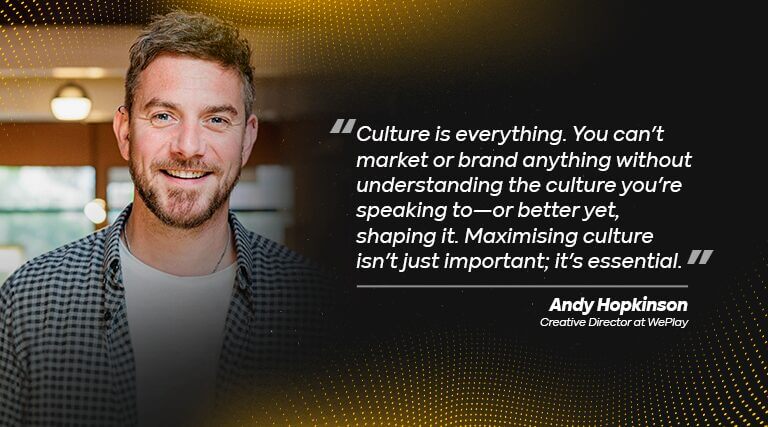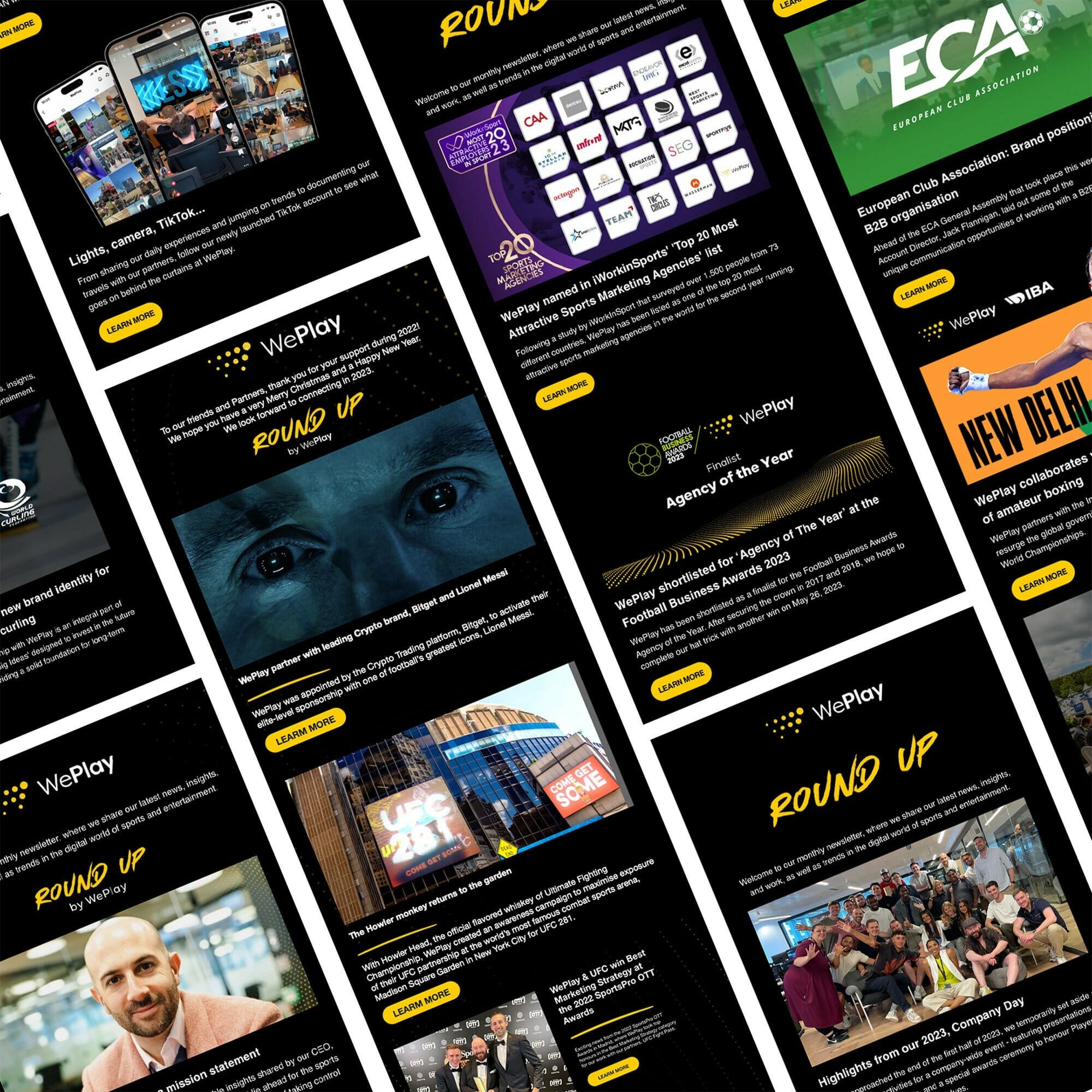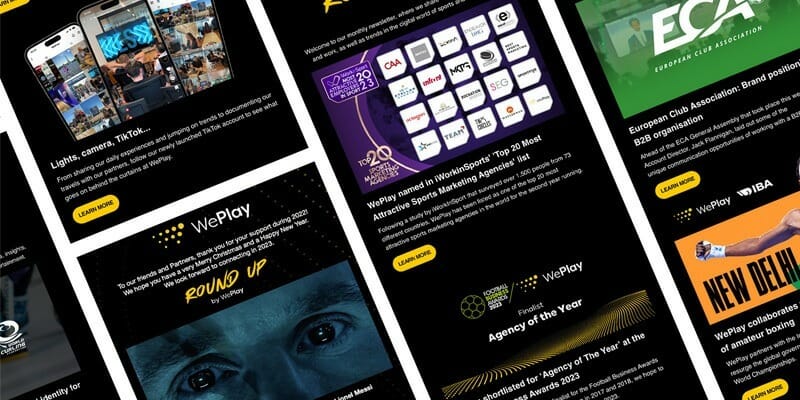
Leaders Week – Let’s Get Creative
It’s officially Leaders Week and here at WePlay, we’re sharing our thoughts around the big talking points of the event.
One of the key themes. Being creative. What does that look like in a time with shrinking attention spans? We asked our Creative Director, Andy Hopkinson, (the brain behind WePlay’s Asian Tour ‘Time to Rise’ and FEI’s ‘Always Believe’ campaign) how innovation nurtures marketing and advertising and is a catalyst for strengthening relationships with clients and customers.
What do you believe the psychology is behind a successful advertising campaign?
A successful sports campaign taps into something deeper. It’s not just about pushing a product, it’s about provoking a reaction, making people feel something real. You cut through the noise by being bold, showing people something, they didn’t even realise they needed to see, and by doing so with a team that believes in the process and working together to make something they are proud of.
Was this important in both the Asian Tour ‘Time to Rise’ and FEI ‘Always Believe’ creative campaigns?
The psychology behind it? It’s emotional. You hit them where it matters—whether that’s making them laugh or making them think. People remember how you make them feel, not what you tell them. You’ve got to be unapologetic, but still create something beautiful and meaningful. It’s about connection, not conformity.
What do you think is the best/most implementable advertising trend at the moment/what are we likely to see in the future?
Right now, the best sports marketing trend isn’t just about technology or platforms—it’s about authenticity. People are sick of the overly polished, fake corporate stuff. They want raw, real, and relatable. Brands that aren’t afraid to show their flaws, tell real stories, and have a bit of edge are the ones winning. Looking ahead? It’s all about a deeper connection.
You’ll see more sports brands creating content that feels less like an ad and more like art, more like storytelling. It’s about experience, not just exposure. Immersive content – whether that’s through AI, AR, or real-world experiences – will be huge, but the key is to make it personal. The future’s not about who can shout the loudest, it’s about who can make you stop, feel, and remember what matters.
What do you think are the baseline factors of the successful campaigns you have created —are they more or less important?
There are a few baseline factors that a campaign can’t survive without. Creativity, value, originality, execution – yes, they’re all important. But they’re not equally important.
Creativity is the lifeblood. If it’s not creative, no one cares. It’s the hook that pulls people in and keeps them interested. Without it, you’re just another piece of noise.
Originality is what sets you apart. People want something fresh, something they haven’t seen a hundred times before. It’s how you stay memorable.
Execution? That’s what makes or breaks the whole thing. You can have the best idea in the world, but if it’s poorly executed, it dies. Flawless execution brings the vision to life and makes it resonate.
And then there’s value – not just the price tag, but the why behind the campaign. What’s the point? Why should people care? That’s the question every campaign has to answer and all creative must have a tangible strategy and go-to-market plan to succeed.
The hierarchy shifts depending on the project. Sometimes creativity is everything, other times execution can carry a campaign. But together, these are the foundations – and they’re non-negotiable.
How important is the maximisation of culture within marketing and the brands you help scope creatively?
Culture is everything. You can’t market or brand anything without understanding the culture you’re speaking to—or better yet, shaping it. Maximising culture isn’t just important; it’s essential. People want to align with brands that get them, speak their language and reflect their values. It’s about tapping into the undercurrents of what’s happening in the world, in real people’s lives, and using that to create something that matters. It has changed significantly since I started in the industry and it is what drives me from brief to brief…without embracing and recognising cultural shifts, we are just chucking things at the wall and seeing what sticks!
It’s not about jumping on trends. It’s about creating something so true to the culture it feels inevitable. That’s where the magic happens – when a brand doesn’t just follow culture, it leads it. You want to build something that becomes part of people’s lives, part of their identity, part of the fabric of society and of interest. If you’re not plugged into the pulse of culture, you’re irrelevant. And in our world, irrelevance is death.
How important/valuable do you think collaborations, marketing drops, and collections are within the industry?
Collaborations, drops, collections – they’re gold if done right. In an industry flooded with content, people want something exclusive, something they can’t get anywhere else. That’s the power of a collaboration or a well-timed drop. It’s not just about selling a product—it’s about creating an event, a moment, something people have to be a part of and I have had the pleasure of working with some of the biggest collabs to date; Kate Moss and Cara Delavingne was a collaboration that I was particularly excited about working on with Burberry back in the day and one that took the fashion world and others by storm.
Collabs bring fresh energy by merging different worlds and fanbases. You get a crossover appeal that feels exciting and unpredictable. Marketing drops? They create urgency, they give people that fear of missing out, which is a huge driver. People crave limited editions and exclusive releases – it makes the brand feel more alive like it’s got its own pulse.
You can’t fake it. If it feels forced, it flops. These strategies work when they’re authentic when they’re aligned with the brand’s identity and when they are believable and true to the brand, to the campaign, and the core of the messaging, which is what we tried to do with the Asian Tour ‘Time to Rise’ campaign. Done right, they’re valuable because they turn campaigns into experiences that people want to be a part of and will be a huge driver in the market and industry for years to come!

